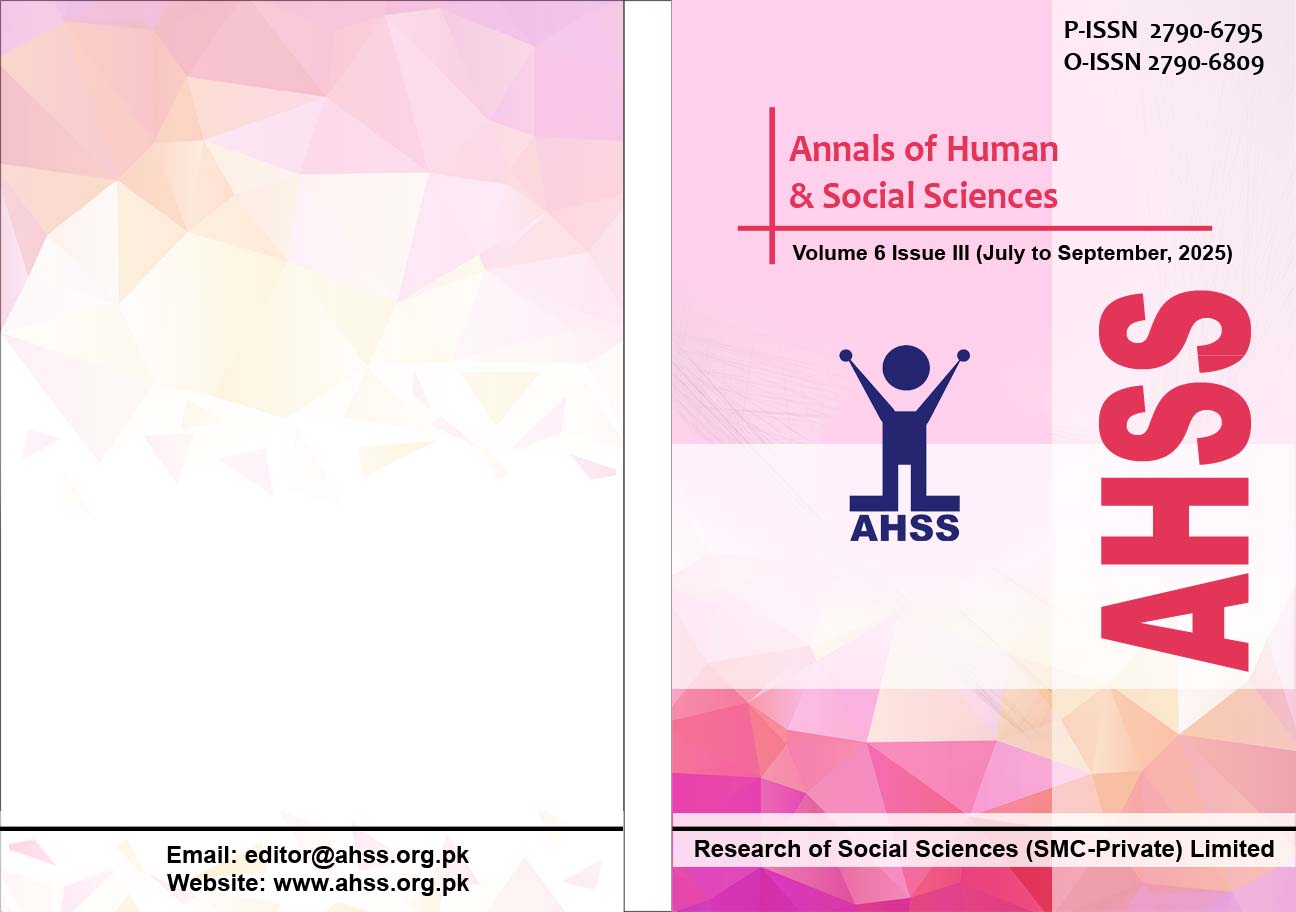Adaptation in Instruction for the Visually Impaired Students in Inclusive Setting
DOI:
https://doi.org/10.35484/ahss.2025(6-III)31Keywords:
Instructional Adaptation, Inclusive Settings, , Visual Impairments, Teacher Age GroupsAbstract
This study aimed to identify instructional adaptations for students with visual impairments in inclusive settings, specifically examining differences based on teachers age groups in Lahore and Vehari. Inclusive education requires effective instructional strategies for visually impaired students. However, many teachers lack the necessary training and resources, hindering the implementation of suitable adaptations. A quantitative research design was used. The sample consisted of 160 teachers from inclusive schools in Lahore and Vehari, selected through non-probability sampling. Data were collected using a self-developed checklist. An independent sample t-test was applied to analyze differences in instructional adaptation based on teachers age. Instructional adaptation was the core variable under investigation. The findings indicated no significant difference in instructional adaptations based on age groups. A major issue identified was insufficient training, which affected teachers capacity to address the needs of visually impaired students. It is recommended to organize regular teacher training programs, provide necessary teaching aids, and ensure appropriate facilities for effective inclusive education.
Downloads
Published
Details
-
Abstract Views: 82
PDF Downloads: 27
How to Cite
Issue
Section
License
Copyright (c) 2025 Annals of Human and Social Sciences

This work is licensed under a Creative Commons Attribution-NonCommercial 4.0 International License.

RESEARCH OF SOCIAL SCIENCES (SMC-PRIVATE) LIMITED(ROSS) & Annals of Human and Social Sciences (AHSS) adheres to Creative Commons Attribution-Non Commercial 4.0 International License. The authors submitting and publishing in AHSS agree to the copyright policy under creative common license 4.0 (Attribution-Non Commercial 4.0 International license). Under this license, the authors published in AHSS retain the copyright including publishing rights of their scholarly work and agree to let others remix, tweak, and build upon their work non-commercially. All other authors using the content of AHSS are required to cite author(s) and publisher in their work. Therefore, RESEARCH OF SOCIAL SCIENCES (SMC-PRIVATE) LIMITED(ROSS) & Annals of Human and Social Sciences (AHSS) follow an Open Access Policy for copyright and licensing.






